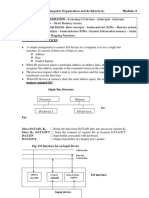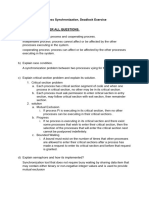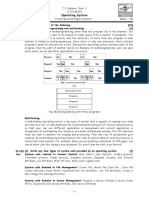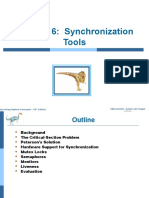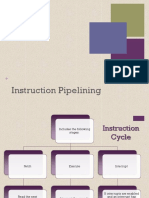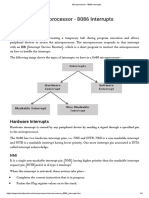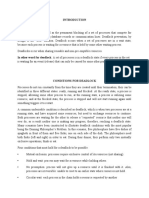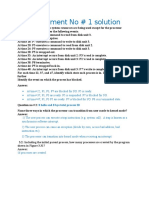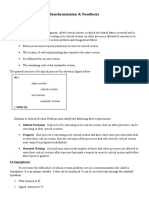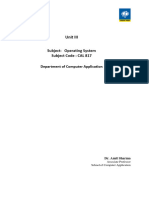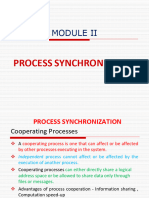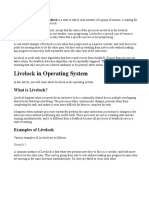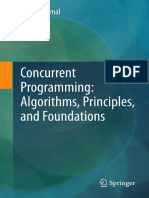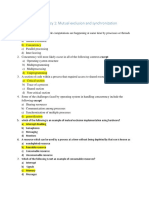0% found this document useful (0 votes)
330 views16 pagesOS Synchronization & Deadlocks
1) A critical section problem arises when multiple processes need access to shared resources concurrently and the outcome depends on the order of access. Synchronization is needed to prevent race conditions.
2) Semaphores can be used to solve the critical section problem by allowing only one process at a time in the critical section through wait() and signal() operations.
3) A deadlock occurs when a set of processes are blocked waiting for resources held by each other in a cyclic manner, satisfying conditions of mutual exclusion, hold and wait, no preemption, and circular wait. It can be analyzed using a resource allocation graph.
Uploaded by
fyjf6i6jyfCopyright
© © All Rights Reserved
We take content rights seriously. If you suspect this is your content, claim it here.
Available Formats
Download as PDF, TXT or read online on Scribd
0% found this document useful (0 votes)
330 views16 pagesOS Synchronization & Deadlocks
1) A critical section problem arises when multiple processes need access to shared resources concurrently and the outcome depends on the order of access. Synchronization is needed to prevent race conditions.
2) Semaphores can be used to solve the critical section problem by allowing only one process at a time in the critical section through wait() and signal() operations.
3) A deadlock occurs when a set of processes are blocked waiting for resources held by each other in a cyclic manner, satisfying conditions of mutual exclusion, hold and wait, no preemption, and circular wait. It can be analyzed using a resource allocation graph.
Uploaded by
fyjf6i6jyfCopyright
© © All Rights Reserved
We take content rights seriously. If you suspect this is your content, claim it here.
Available Formats
Download as PDF, TXT or read online on Scribd
/ 16




